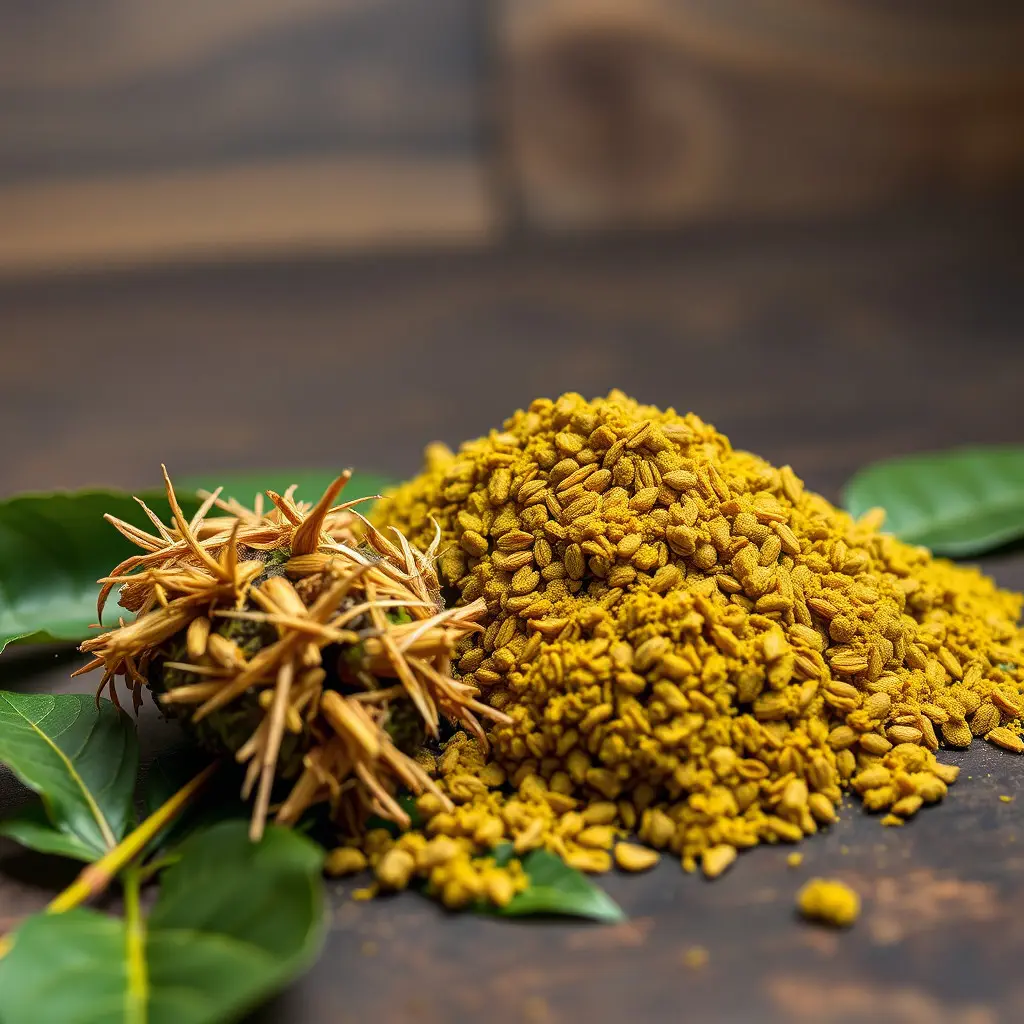Indiana's status of kratom as both a potential natural remedy for joint pain relief and a controlled substance has sparked significant interest and regulatory confusion. The alkaloids in kratom leaves, mitragynine and 7-hydroxymitragynine, engage with opioid receptors, offering analgesic effects that some Indiana residents have found beneficial for chronic joint pain. Despite its inclusion in Schedule I under state law—a classification that also applies to substances like heroin and LSD—kratom remains available in various forms in Indiana, with a complex set of local regulations that users must navigate carefully. As kratom's legal status varies across the state, consumers are advised to stay informed about legislative changes and to purchase products from reputable sources for safety and efficacy. The discourse around kratom in Indiana underscores the necessity for a coherent framework that balances its therapeutic potential with public health considerations. Users should approach kratom with caution, adhering to medical advice, and considering the different strains' varying effects on pain management. In light of the ongoing debate and the need for responsible use, it is crucial for Indiana residents interested in kratom as a natural remedy to do so under the guidance of healthcare professionals.
Exploring the intersection of natural remedies and joint pain relief, this article delves into the potential benefits of kratom, a plant-based substance gaining attention in Indiana for its therapeutic properties. As we navigate through “Understanding Kratom’s Role in Joint Pain Relief: The Indiana Perspective,” readers will gain insights into how kratom may alleviate joint discomfort from those who have experienced its effects. We’ll also examine the legal landscape of kratom in Indiana, shedding light on “Exploring the Legal Status and Accessibility of Kratom in Indiana.” Before incorporating kratom into one’s wellness routine, it’s crucial to understand its safe usage and considerations as outlined in “Safe Usage and Considerations When Using Kratom for Joint Pain in Indiana.” Join us as we explore the nuances of using kratom for joint pain relief within the context of Indiana’s regulations and community experiences.
- Understanding Kratom's Role in Joint Pain Relief: The Indiana Perspective
- Exploring the Legal Status and Accessibility of Kratom in Indiana
- Safe Usage and Considerations When Using Kratom for Joint Pain in Indiana
Understanding Kratom's Role in Joint Pain Relief: The Indiana Perspective

Kratom, a plant originating from Southeast Asia, has garnered attention in Indiana for its potential role in joint pain relief. The mitragynine and 7-hydroxymitragynine alkaloids found in kratom leaves are believed to interact with the body’s opioid receptors, offering analgesic properties that can help alleviate chronic pain associated with joint conditions. Indiana residents have been exploring this natural alternative, often turning to local vendors or online sources to access kratom products. The efficacy of kratom for joint pain relief in Indiana is supported by anecdotal evidence and emerging research, suggesting its application as a complementary therapy for those suffering from joint discomfort.
In the context of Indiana’s regulatory environment, it’s important to note the varying legal statuses across different regions within the state. While some areas have embraced kratom as a viable option for pain management, others have enacted restrictions or bans. This patchwork of legislation underscores the need for consistent policies that reflect the growing body of research on kratom’s effects and its potential benefits for joint pain relief. Indiana’s ongoing dialogue between health professionals, policymakers, and consumers is crucial in navigating the nuanced role of kratom within the state’s healthcare landscape.
Exploring the Legal Status and Accessibility of Kratom in Indiana

In Indiana, the legal status and accessibility of kratom have been subjects of debate and legislative action. Kratom, derived from the leaves of the Mitragyna speciosa tree native to Southeast Asia, has gained attention for its potential effects on pain relief and overall well-being. As of recent updates, Indiana law classifies kratom as a synthetic chemical and places it within Schedule I of controlled substances, alongside drugs like heroin and LSD. This classification makes the sale, possession, and distribution of kratom legally restrictive, subject to the state’s regulations and penalties for unauthorized use. Despite this legal stance, kratom remains accessible in various forms, including capsules, powder, and tea, through specialized vendors and online retailers within the state boundaries. Consumers interested in purchasing kratom in Indiana must navigate a complex landscape of local laws that may differ from county to county. It’s imperative for individuals to stay informed on the latest legislative changes affecting kratom accessibility and compliance with state regulations to ensure they are not inadvertently violating any laws. The evolving legal status of kratom in Indiana underscores the importance for consumers to exercise due diligence and for policymakers to carefully consider the implications of its classification on public health and consumer safety.
Safe Usage and Considerations When Using Kratom for Joint Pain in Indiana

When considering the use of kratom for joint pain relief in Indiana, it is imperative to approach this alternative therapy with both caution and knowledge. Kratom, derived from the leaves of the Mitragyna speciosa tree, has been a subject of increasing interest for those experiencing chronic joint discomfort due to its potential pain-relieving properties. In Indiana, where many individuals face the challenges of arthritis and related conditions, understanding how to safely incorporate kratom into one’s wellness regimen is crucial. The state’s regulations regarding kratom use are specific; it is legal in Indiana but with restrictions on its sale to minors and clear labeling requirements. Users should adhere to these guidelines and ensure they source kratom from reputable vendors who provide pure, tested products. It’s also important for users to be aware of the different strains of kratom available—Indo, Maeng Da, Bali, etc.—as each may have varying effects on pain management. Indiana residents should start with a low dose and monitor their body’s response, considering factors like weight, age, and individual metabolism. Regularly consulting with healthcare providers is essential to avoid potential interactions with other medications and to ensure that kratom use does not exacerbate underlying health conditions. Safe usage of kratom for joint pain relief requires a balance of informed decision-making, responsible sourcing, and ongoing medical guidance.
In conclusion, the potential of kratom as a natural alternative for joint pain relief has been illuminated through various perspectives within Indiana. The state’s unique stance on kratom usage offers a compelling narrative for those seeking relief from joint discomfort. As discussed, understanding the legalities and accessibility of kratom in Indiana is paramount for safe and effective use. It is imperative that individuals consider the guidelines for responsible consumption to maximize benefits while minimizing risks. The insights provided herein aim to inform and guide residents and visitors alike on this botanical option within the broader context of holistic health practices. For those interested in exploring kratom as a part of their wellness routine, it is advisable to consult healthcare professionals and stay informed about the evolving regulatory landscape surrounding kratom in Indiana.






